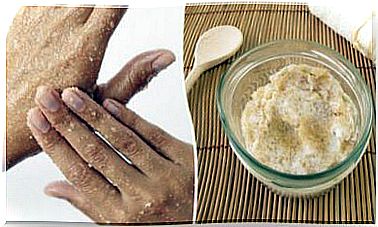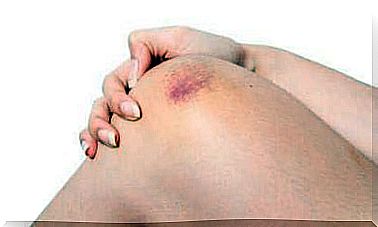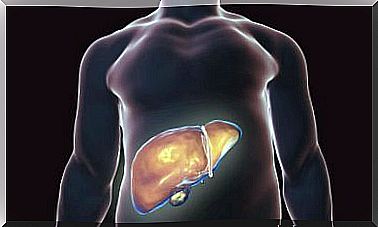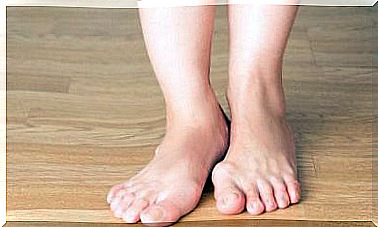What Are The Most Common Allergies In Children?
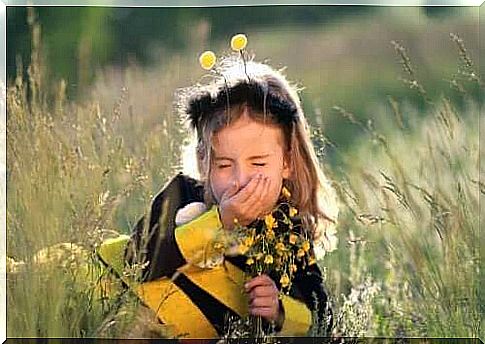
Allergies often arise when the immune system defends the body in an exaggerated way. It therefore attacks a harmless substance. Allergies are very common in childhood. Keep reading and we’ll tell you what are the most common allergies in children.
Modern disease

Allergies often arise in childhood. If a child’s parents or siblings suffer from allergies, the child is also likely to develop one. However, they may not react in the same way or to the same allergens.
It is interesting to note that our parents and grandparents had fewer allergies than modern children. The most common allergies are due to the current lifestyle. Lifestyles, unhealthy foods and contaminants cause allergens to spread. According to the U.S. Centers for Disease Control, children’s food allergies have doubled in the last 20 years.
Why is this?
Believe it or not, the reason is very obvious. Previous generations ate fresher food. Modern food is processed with chemical additives. Before, we also ate more organic food that was not treated with pesticides and fertilizers.
Respiratory allergies have also worsened due to environmental pollution. Climate change has changed the production of plant pollen. Increased use of chemicals for personal hygiene has also exacerbated allergies.
The most common allergies in children
The list of “most common allergies” varies by allergen. An adult or child with allergies comes into contact with allergens through food, breathing, or skin. Here are the most common allergies in children:
1. Dust mites
Dust mites are one of the most common allergens. These microscopic insects live all around us. They accumulate on mattresses, pillows, rugs and plush toys. They feed on dead skin cells.
Routine cleaning is an important way to prevent dust mites from multiplying and spreading. So ventilate your home regularly to reduce dust accumulation and prevent dust mites.
2. Pollen
Pollen is also one of the most common allergens. Pollen allergies are seasonal, as every tree, shrub and hay species releases pollen into the air, which then travels with the wind, fertilizing other plants. A person may be allergic to various types of pollen, but the most common and annoying of these is hay-spreading pollen. Grass crops include wheat, oats and barley. However, they are more common in rural areas.
You can check the pollen bulletin from numerous different sources. They can usually be found in connection with local weather reports.
3. The most common allergies in children: mold
Home is a common allergen in the home. It can also be found in several places where children spend time. Home is a type of fungus that grows in hot as well as humid environments. The smell of mold is very typical and its spores cause a reaction in the body.
4. Pets
Beloved pets are the triggers of many allergies. Animal hair, skin, dandruff, saliva and even urine can cause allergic reactions in children.
5. Cockroaches
Cockroaches also pose a potential allergy risk in urban settlements. Prolonged exposure to these creatures can lead to asthma. Chemical insecticides can worsen allergy symptoms and don’t even help much in preventing cockroaches.
6. The most common allergies in children: food
Some of the most common foods that cause allergies in children are:
- Cow’s milk
- Eggs
- Seafood such as fish, shellfish and molluscs
- Nuts such as peanuts, hazelnuts, walnuts, almonds and cashews
- Soy
There are also many confusions associated with wheat and gluten. People are not allergic to wheat gluten, but rather sensitive to it. Such an inability to digest gluten is also known as celiac disease.
7. Insect bites

Insect bites can cause swelling, itching, and redness in many children. If a child is allergic to insect venom, it can cause severe reactions. It can even endanger the life of a child.
8. Medicines
Both prescription and over-the-counter medications can cause allergic reactions. Antibiotics also belong to this group. It is therefore important not to use any medications without your doctor’s instructions.
9. The most common allergies in children: chemical products
Certain household cleaners, cosmetics, or cleaning agents can cause allergies in children. The chemical ingredients in these products are responsible for the reactions they cause. They can also irritate the respiratory tract or skin.
In extreme cases, the child may also develop an anaphylactic reaction. It is the body’s quick and powerful defense when it detects an allergen. It can even lead to death.
Allergy symptoms in children

Allergy symptoms depend on how sensitive the child is to allergens. Some allergies are more severe than others. Therefore, if your child has any of the following symptoms, it is best to see a pediatrician. Your doctor will probably need to do different tests to determine what type of allergy is involved.
Symptoms of respiratory allergy
- Sneezing
- Coughing
- Itching of the nose or throat
- Nasal congestion or runny nose
- Itching or redness of the eyes
- Asthma, wheezing and difficulty breathing
Symptoms of food allergies and insect bites
- Itching in the mouth or throat when swallowing food
- Hives
- Eczema-like rash
- Itching of the nose and throat
- Shortness of breath
- Swelling of the face or throat
- In the most severe cases, the child may also be in shock
The most common allergies in children: a summary
Many children get rid of allergies at an early stage. However, others live with them for the rest of their lives. Parents play an important role in teaching children to identify allergens that affect them and prevent them from coming into contact with them.
It is important to avoid self-medication. Also, be careful when cleaning, and do not use chemicals at home. It is good for the child’s health.

